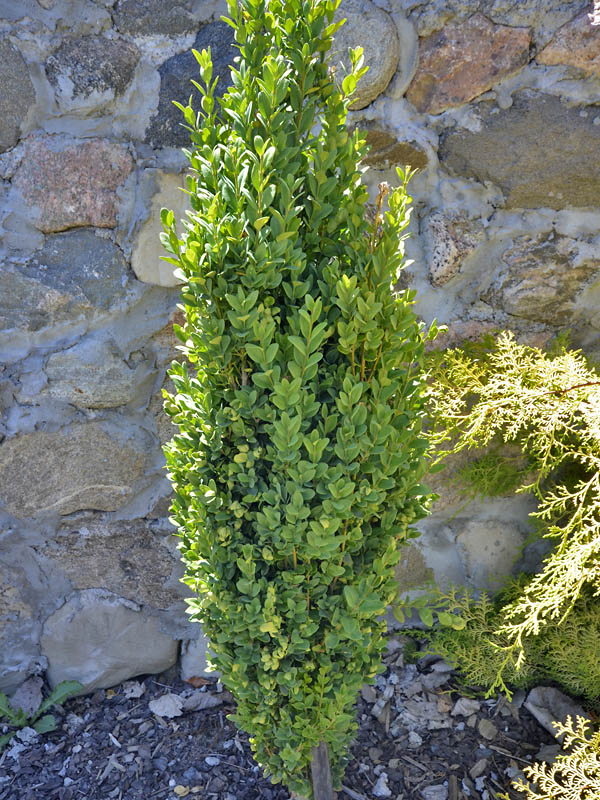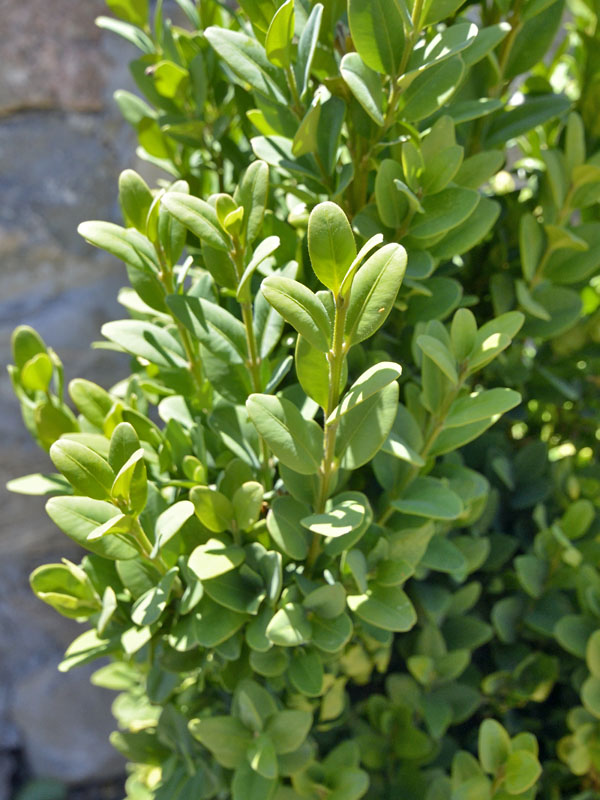| General Description | A very fastigiate shrub that grows at a slow rate, maintaining its beautiful green foliage year round. |
| ID Characteristic | |
| Shape | A narrow, upright column that is dense, with deep green leaves and reaches about 1.5 m in height. |
| Landscape | ‘Graham Blandy’ is commonly used as hedge, but can also be used as a screen when plants are grouped together. With its green foliage all year round it is a great accent shrub throughout the winter seasons. |
| Propagation | Propagate in mid-summer by taking semi-ripe cuttings from the current season's growth. Collect in the early morning using a sharp knife to cut pieces 10-15 cm in length. Remove all leaves from the lower third and pinch out any soft terminal growth. Dip into a number 2 rooting hormone, insert into trays or pots of cutting compost and water well. Place in a propagator with bottom heat set at 15°C with or without mist; rooting should occur in 4-6 weeks. |
| Cultivation | Moist, alkaline soils with full sun to partial shade. |
| Pests | Caterpillars, leaf miners and boxwood mites. As of late Boxwood blight has become a major problem both in Europe and most of North America. The fungus Cylindrocladium buxicola causes leaf spots, defoliation and even extensive die-back. The disease can be spread by water splash, tools and footwear. |
| Notable Specimens | Whistling Gardens, Wilsonville, Ontario, Canada. |
| Habitat | Horticultural origin. |
| Bark/Stem Description | Fine with soft brown to light grey bark. |
| Flower/Leaf Bud Description | Very small in size, single or paired and oval in shape. |
| Leaf Description | Small simple oblong leaves 40 mm in length that are light green in the spring turning a rich green in the summer and persist all year round. |
| Flower Description | Small white flowers which are quite fragrant. |
| Fruit Description | Small, green, hard capsules that are normally found in groups of three. |
| Colour Description | Fresh green leaves, soft in the spring and dark in summer. Brown to light grey bark and small white flowers. |
| Texture Description | Fine texture. |


